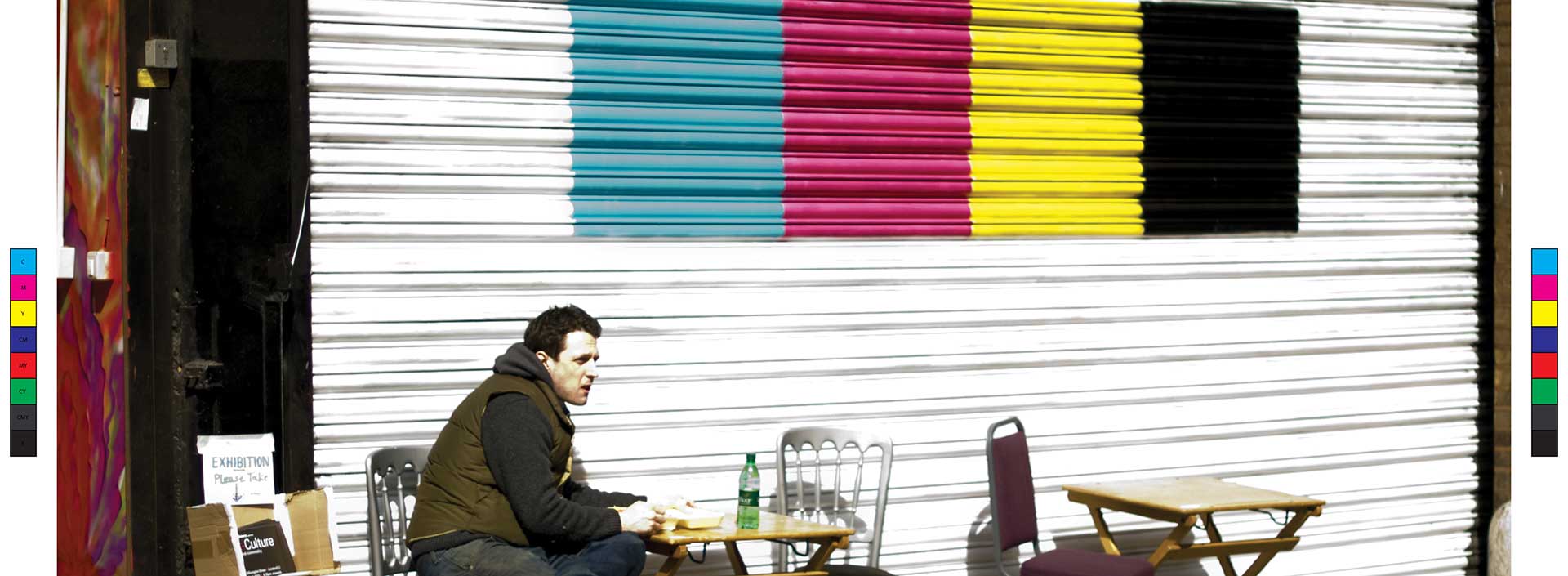NULL
To sophisticated print buyers, the terminology is second-nature; “48 pages + cover, 4/4, dull spot varnish, 100# coated cover, 70# opaque text, saddle-stitch … ” etc. But to new buyers, the print buying process can be tricky. I’ve already covered some other basics like how the offset printing process works and why price-per-piece is so heavily tied to your quantity, but after a few recent potential clients called and didn’t understand what I meant when I said “four color process” I thought it would be a good time to touch on exactly what this means.
At it’s most basic definition, four color printing is full color printing. The same way you used to combine yellow and blue to make green in art class, we use four different colors in different ratios to deliver (almost) any color you want to see.
You’ll often hear 4 color printing referred to as “CMYK.” This is a reference to the four colors that are used in the process. CMYK stands for cyan, magenta, yellow, and black. From those four colors, we can deliver almost any color in the rainbow. I say almost because the four color process can’t deliver things like metallics or even the color (or lack thereof I guess) white. The only way we can create white is to apply nothing to a white sheet. Otherwise, if you need a spot white (or a metallic or some other specialty color) then it needs to be applied by another unit on the press after the four color process. This is why we have a five color press here at Searles, and there are some presses (especially label presses) that can go into double digits on how many colors can be applied.
Most likely, you’ve already seen this process in action in some way, shape, or form. The most basic example is the grade-school art class color mixing I mentioned earlier. To be fair, we still do that too. When we need to match a PMS color we often need to mix specific quanitites of different color inks to do so, but that’s a topic for another day.
If you’ve ever used a program like Photoshop or done any kind of web development, you should be quite familiar with color separations whether you realize it or not. Digital colors work similarly to print process, however they work with a different color wheel. By default, these applications use the RGB (red, green, blue) color system to get you to the final color you choose with your eye-dropper. (That six digit number you’re provided is a hexidecimal representation of each the amount of each that goes into making the final color, but that’s a little beyond the scope of this article.) If you’re working on art for print, you need to convert your project to CMYK so the colors can be properly separated and burned to plates for print.
When you go to place your first order for print, remember that four color is just the proper way to indicate you want full color, but remember the limitations it brings and understand if and when you may need to use a fifth color (or more). Also remember that adding those requirements becomes expensive, as 6 and 7 color presses and printers are far less common than 4 and 5 color presses. If you’d like to see the process in action, feel free to contact me to come down and take a tour!
Photo: Flickr | Ann Wuyts


